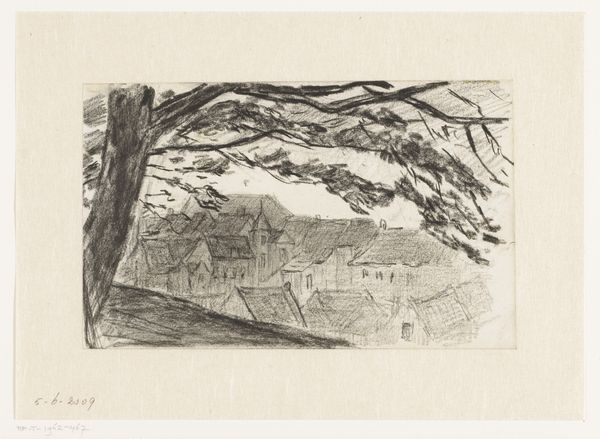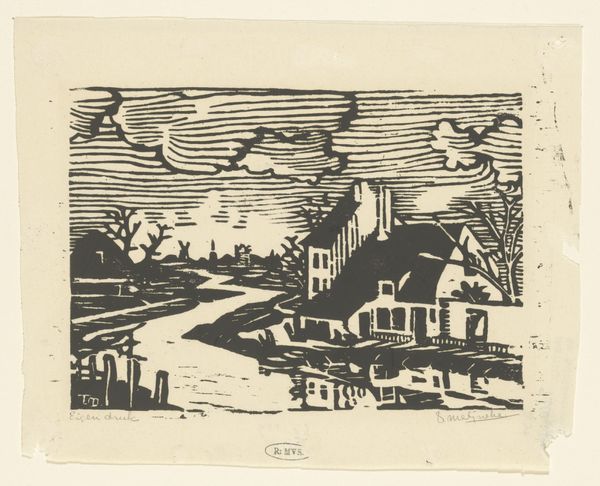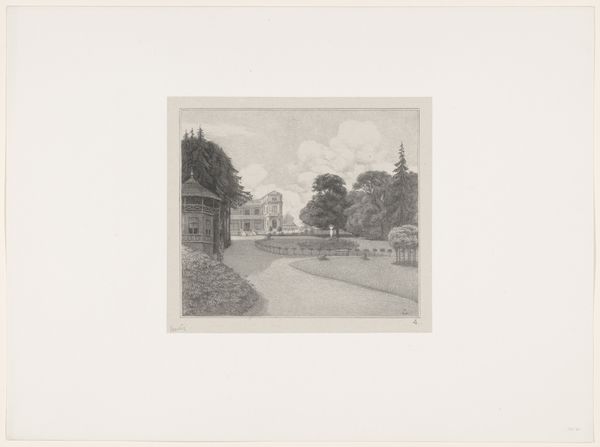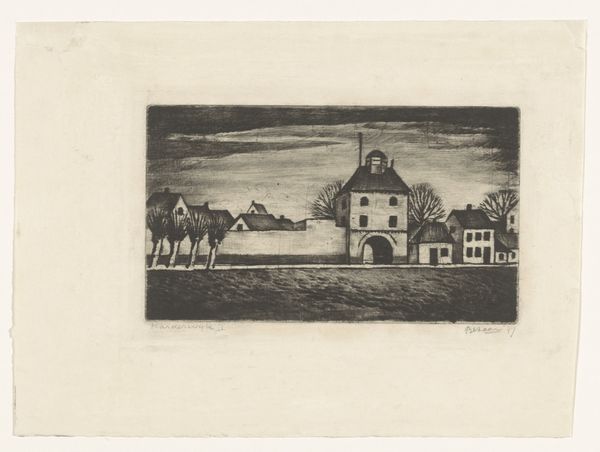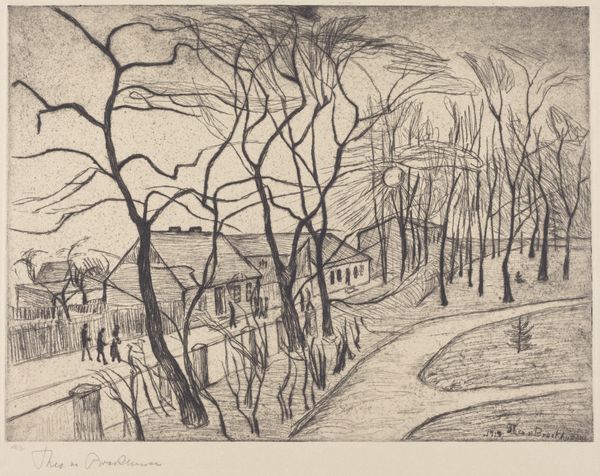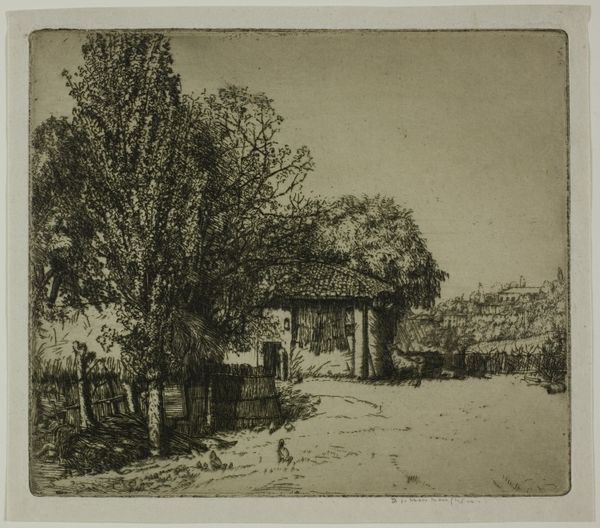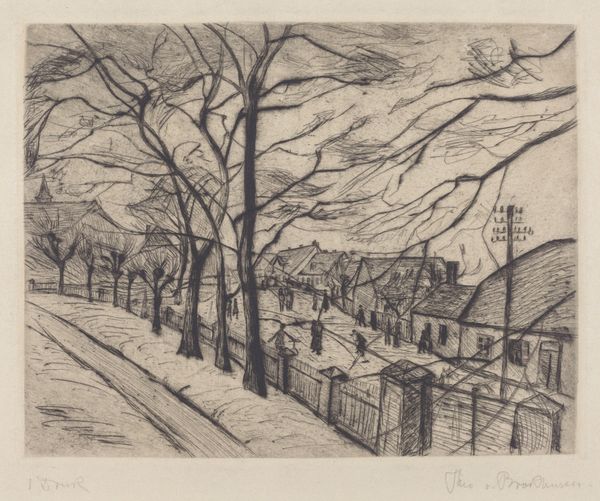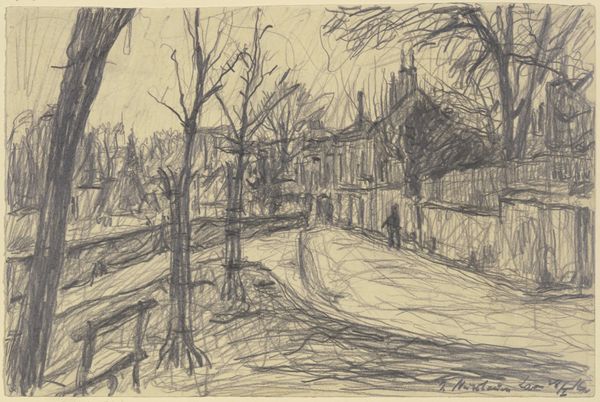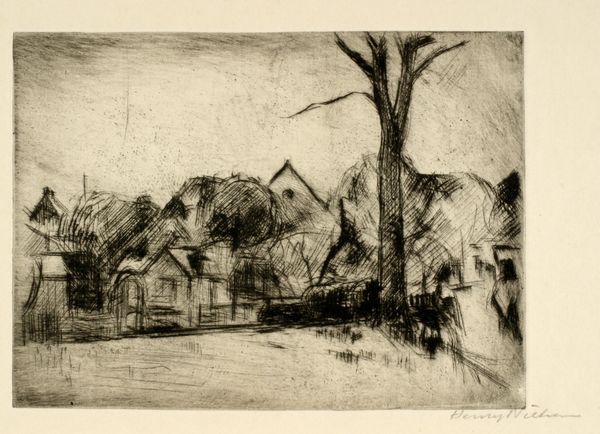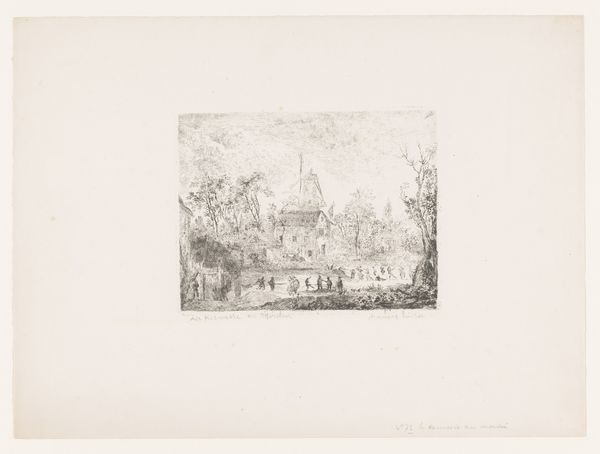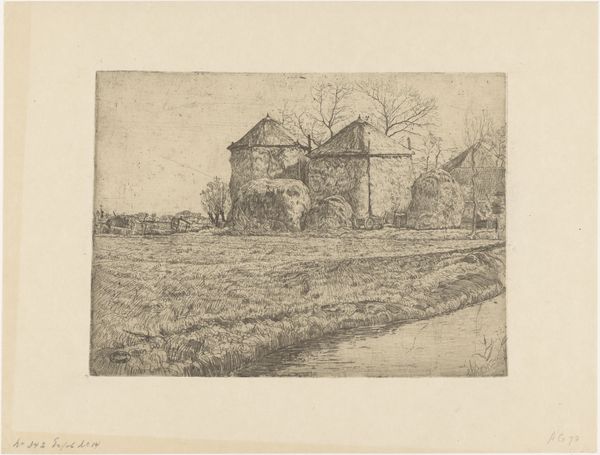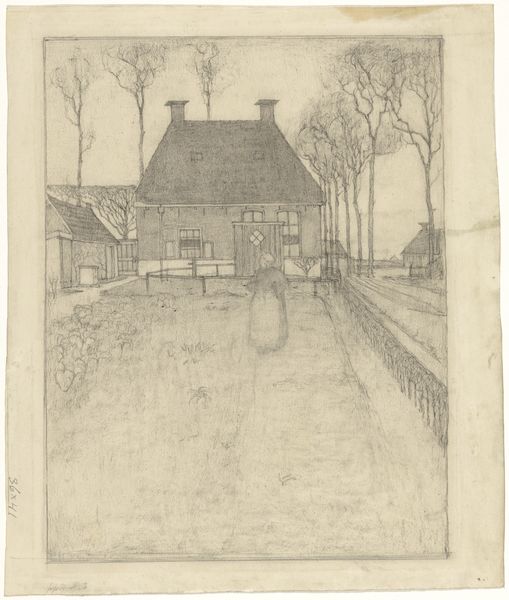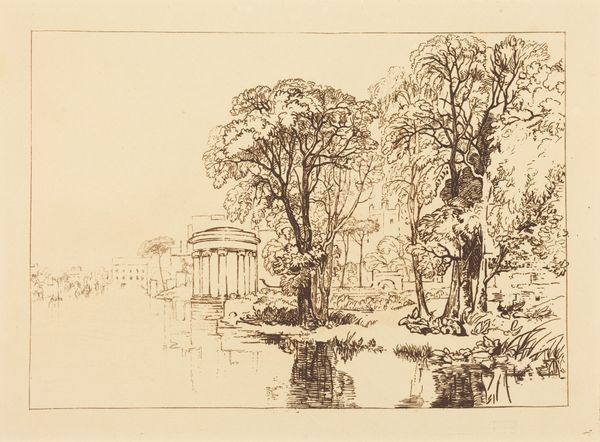
Dimensions: 495 × 648 mm (plate); 581 × 790 mm (sheet)
Copyright: Public Domain
Edvard Munch created this print, “The House,” using etching, a process that involves biting into a metal plate with acid to create an image. This technique allowed Munch to achieve a stark contrast between light and shadow, which is so characteristic of his work. Look closely, and you'll notice the lines aren't perfectly clean, but rather scratchy and uneven, full of visual texture. This is partly due to the inherent qualities of the etching process, where the acid erodes the metal in unpredictable ways. But it is also a reflection of Munch's own hand, his deliberate choice to embrace imperfection. This lends the image an emotional weight, echoing the themes of anxiety and isolation often found in his paintings. In its time, etching was a relatively accessible medium, allowing artists to produce multiple impressions of their work and reach a wider audience. But the labor-intensive nature of the process, from preparing the plate to applying the acid and pulling the print, is a testament to the artist's commitment to his craft. By understanding the materials and methods employed, we gain a deeper appreciation for the artistic vision.
Comments
No comments
Be the first to comment and join the conversation on the ultimate creative platform.
